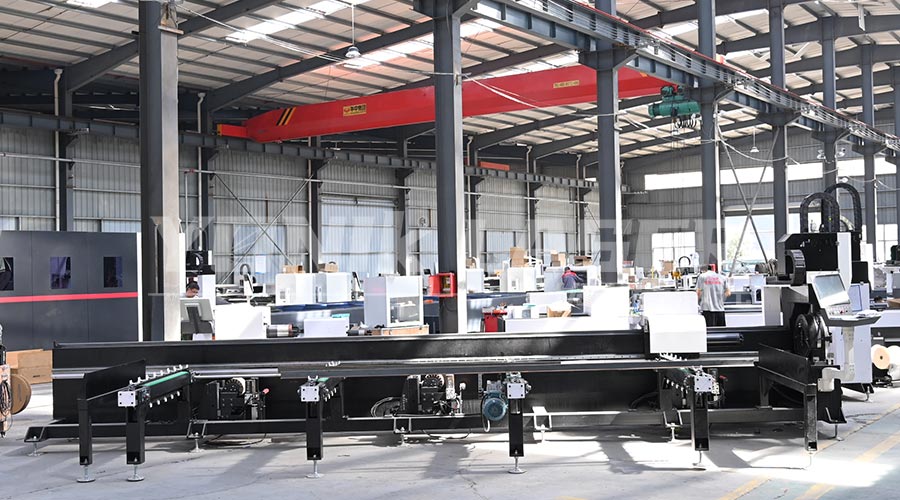In modern manufacturing, laser cutting machines play a vital role with their high precision, high efficiency and high flexibility. However, with the increase of use time, the mechanical parts of laser cutting machines will inevitably wear out, which not only affects the cutting accuracy and efficiency of the equipment, but may also cause a series of faults. Therefore, it is particularly important to regularly inspect and maintain the mechanical parts of laser cutting machines for wear. This article will introduce in detail the methods and maintenance plans for the inspection of wear of mechanical parts of laser cutting machines, aiming to help people in the industry better maintain the equipment and extend its service life.

1. Inspection method for wear of mechanical parts of laser cutting machines
Optical parts inspection
Optical parts are the core part of laser cutting machines, and their cleanliness and integrity directly affect the cutting quality and efficiency. Use special lens paper or cotton swabs to dip in an appropriate amount of alcohol, gently wipe optical parts such as focusing mirrors and reflectors, and remove dust, stains or fingerprints on the surface. At the same time, carefully check whether the lens has scratches, cracks or looseness, and replace damaged lenses or tighten loose parts in time.
Guide rail and lead screw inspection
Guide rails and lead screws are key components of the moving parts of the laser cutting machine. Their wear is directly related to the cutting accuracy and stability of the equipment. The surface wear of the guide rails and lead screws should be checked regularly, and abnormal sounds or vibrations should be heard, and the gap should be observed to see if there is too much gap. For severely worn guide rails and lead screws, they should be replaced or repaired in time.
Cutting head and nozzle inspection
The cutting head is the part of the laser cutting machine that directly acts on the material. The wear of its nozzle will affect the cutting accuracy and efficiency. The cutting head nozzle should be checked regularly for blockage, wear or deformation, and the blockage should be cleared or the worn nozzle should be replaced in time. At the same time, the coaxiality of the nozzle and the laser beam should be checked to ensure that the laser beam can be accurately focused on the material.
Transmission component inspection
Transmission components such as belts, gears, chains, etc. may wear or loosen during long-term operation. The wear of these components should be checked regularly, and severely worn components should be replaced or loose components should be adjusted in time.
2. Maintenance plan for mechanical parts of laser cutting machine
Regular lubrication
In order to keep the moving parts such as guide rails and lead screws running smoothly, lubrication should be performed regularly. Select lubricating oil or grease suitable for the equipment requirements and apply it according to the requirements of the equipment manual. At the same time, be careful to avoid excessive addition of lubricating oil to avoid waste and pollution.
Cleaning and maintenance
Regular cleaning and maintenance of the laser cutting machine can remove dust, oil and debris on the surface of the equipment to prevent them from damaging the equipment. Use a soft dry cloth or special cleaning agent to wipe the equipment housing and operation panel. Be careful not to use cleaning agents containing corrosive or solvents. For internal circuit boards, power modules and other components, cleaning should be carried out under the guidance of professionals.
Tightening screws
During the operation of the laser cutting machine, the screws may become loose due to factors such as vibration and impact. The screws of various parts of the equipment should be checked regularly to see if they are tightened, and the loose screws should be tightened in time to ensure the stability and safety of the equipment.
Replacement of worn parts
For severely worn parts such as guide rails, lead screws, cutting head nozzles, etc., they should be replaced in time. Choose original parts with reliable quality or certified replacement parts to ensure that the replaced parts can meet the requirements of the equipment.
Technical training and emergency drills
Regularly conduct technical training for operators to master the operating skills and maintenance methods of laser cutting machines. At the same time, organize emergency drills to improve employees' ability to deal with emergencies and ensure that measures can be taken quickly in emergency situations to reduce losses.

3. Summary
The wear inspection and maintenance of mechanical parts of laser cutting machines are key links to ensure stable operation of equipment and extend service life. By regularly checking the wear of optical parts, guide rails and lead screws, cutting heads and nozzles, and transmission parts, and taking measures such as regular lubrication, cleaning and maintenance, tightening screws, replacing worn parts, technical training and emergency drills, the equipment failure rate can be effectively reduced and cutting accuracy and efficiency can be improved. At the same time, this also provides strong support for the transformation and upgrading of the manufacturing industry and sustainable development.
2025-07-22
2025-07-21
2025-07-19